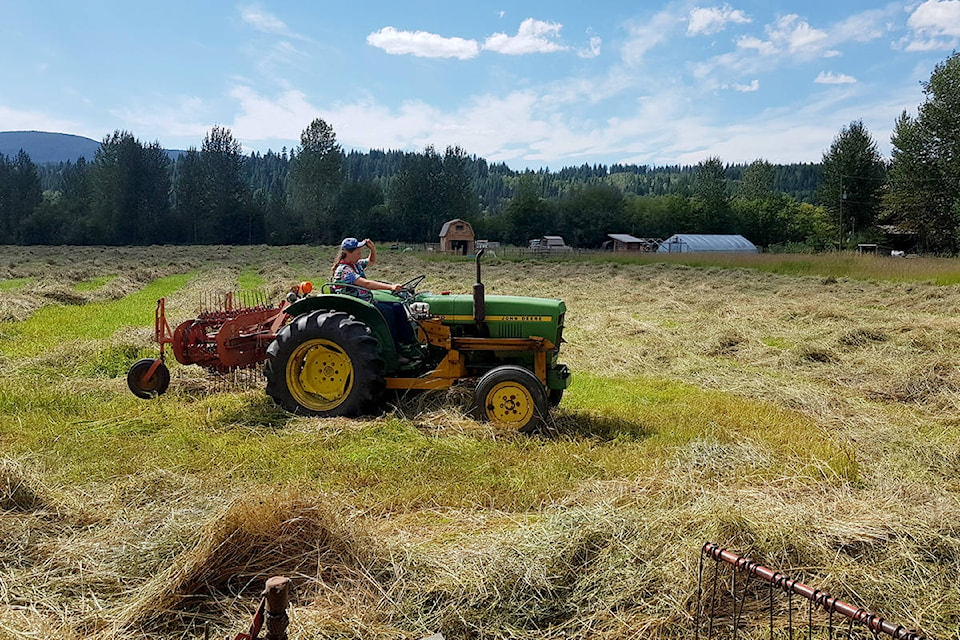By David Zirnhelt
Ranch Musings
Ranch and farm life is changing, but memories of the past can motivate and pique interest in the land we look after.
The other evening I was sent home after being out in 30 degree heat all day raking and baling.
The ever present threat of a rainstorm provokes a desire to get the hay, once field cured, into the barn to prevent spoilage and allow the fields under the bales to regrow.
Older ranchers and people in general joke about how they used to do more after supper than they do now all day.
That is part of the reality, but I do enjoy the family “pitching” in to make the work light. Working together is the most satisfying part of ranch life for me these days.
As I go to the hayfields, now that there is some great weather, I am taken back to the times 60 years ago when I was first introduced to work on this very land.
READ MORE: Isolation and connectivity on the ranch
A friend and I had ridden horses from the 150 Mile to Beaver Valley to my uncle and aunt’s ranch which had passed to them from my father. We own it now, complete with memories of how things were.
Our jobs as novice ranch workers were to help make the bales and to pick them up, then haul and stack them at the barn. The baler was a “wire tie” type and took a tractor operator and two people sitting at the back end of the baler.
One person would insert a needle — a “u”-shaped steel channel in to the bale chamber where the hay was being compressed — the thread a piece of haywire some seven feet long, to the needle sending two ends through the bale to the other side where the second person would tie the wire.
The inglorious part of this job was being subject to the chaff with each stroke of the plunder.
The upside was frequent bathing in the cold stream that ran through the top of the field where the outpouring from the creek’s culvert under the road which formed a perfect bathtub in the creek bed.
Moving the baler from one field to the other, sometimes several miles, meant we got to ride on the seats of the workstations at the back of the baler. My uncle would delight in sometimes crowding the rose bushes which overhung the roadway so as to help us scratch our bare backs.
I was thirteen that first year and it was as though it were yesterday. That is the age of our eldest grandchild who I am now supervising and training to rake hay. I remember the heat but also the relief when relieved of our tasks for a break to cool off with a swim with the neighbours in the lake.
I asked the granddaughter what was the best part of raking hay. “Grandma’s picnic lunch” was the answer. Fresh peas, carrots and raspberries from the garden were on top of the list of great lunch items.
I too remember the great lunches provided by my aunt who made great cottage cheese, bread and pies for haying season.
Then there was the sleep over at the neighbour’s with all of the kids in the hayloft. No one cared what time we went to sleep, although we rushed to breakfast the next morning ready for another day of work and play in paradise.
David Zirnhelt is a rancher and member of the Cariboo Cattlemen’s Association. He is also chair of the Advisory Committee for the Applied Sustainable Ranching Program at TRU.
Do you have a comment about this story? email:
editor@wltribune.com
Like us on Facebook and follow us on Twitter.
